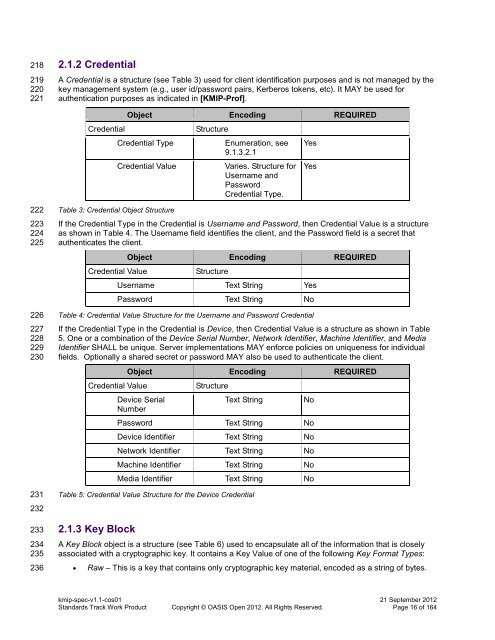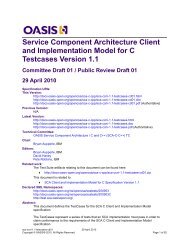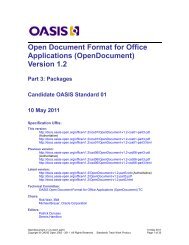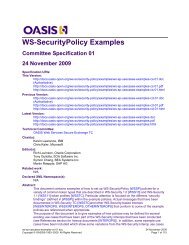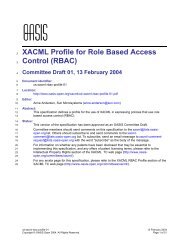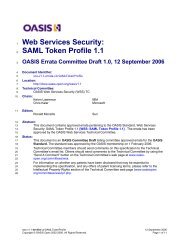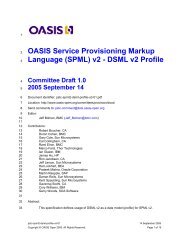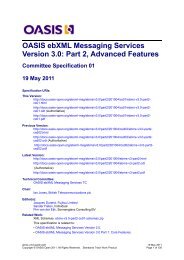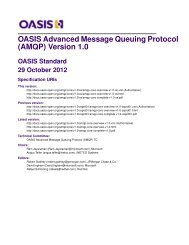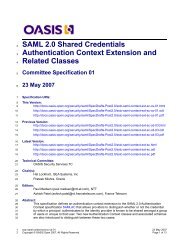Key Management Interoperability Protocol Specification Version 1.1
Key Management Interoperability Protocol Specification Version 1.1
Key Management Interoperability Protocol Specification Version 1.1
You also want an ePaper? Increase the reach of your titles
YUMPU automatically turns print PDFs into web optimized ePapers that Google loves.
2182192202212.1.2 CredentialA Credential is a structure (see Table 3) used for client identification purposes and is not managed by thekey management system (e.g., user id/password pairs, Kerberos tokens, etc). It MAY be used forauthentication purposes as indicated in [KMIP-Prof].CredentialObject Encoding REQUIREDCredential TypeCredential ValueStructureEnumeration, see9.1.3.2.1Varies. Structure forUsername andPasswordCredential Type.YesYes222223224225226227228229230231232233234235236Table 3: Credential Object StructureIf the Credential Type in the Credential is Username and Password, then Credential Value is a structureas shown in Table 4. The Username field identifies the client, and the Password field is a secret thatauthenticates the client.Credential ValueObject Encoding REQUIREDStructureUsername Text String YesPassword Text String NoTable 4: Credential Value Structure for the Username and Password CredentialIf the Credential Type in the Credential is Device, then Credential Value is a structure as shown in Table5. One or a combination of the Device Serial Number, Network Identifier, Machine Identifier, and MediaIdentifier SHALL be unique. Server implementations MAY enforce policies on uniqueness for individualfields. Optionally a shared secret or password MAY also be used to authenticate the client.Credential ValueObject Encoding REQUIREDDevice SerialNumberStructureText StringNoPassword Text String NoDevice Identifier Text String NoNetwork Identifier Text String NoMachine Identifier Text String NoMedia Identifier Text String NoTable 5: Credential Value Structure for the Device Credential2.1.3 <strong>Key</strong> BlockA <strong>Key</strong> Block object is a structure (see Table 6) used to encapsulate all of the information that is closelyassociated with a cryptographic key. It contains a <strong>Key</strong> Value of one of the following <strong>Key</strong> Format Types:Raw – This is a key that contains only cryptographic key material, encoded as a string of bytes.kmip-spec-v<strong>1.1</strong>-cos01 21 September 2012Standards Track Work Product Copyright © OASIS Open 2012. All Rights Reserved. Page 16 of 164


